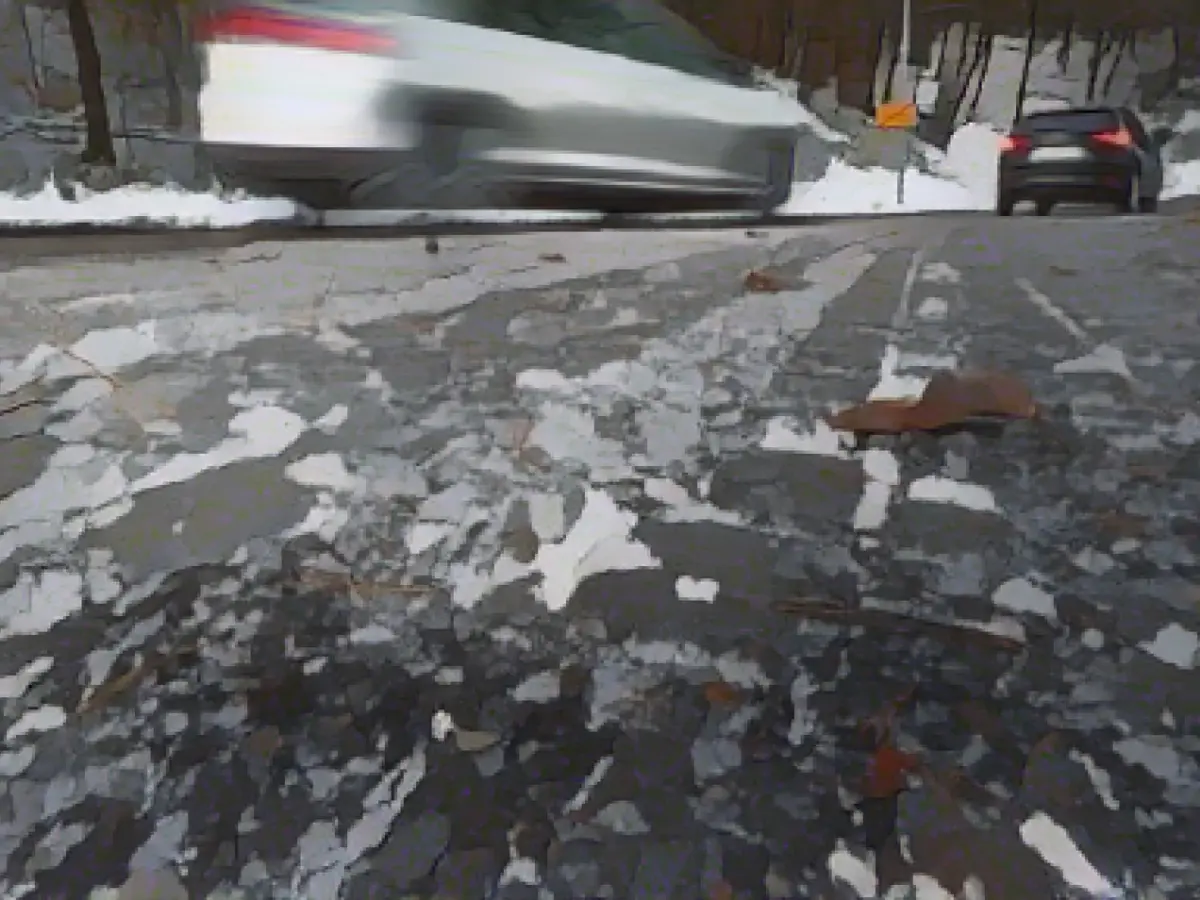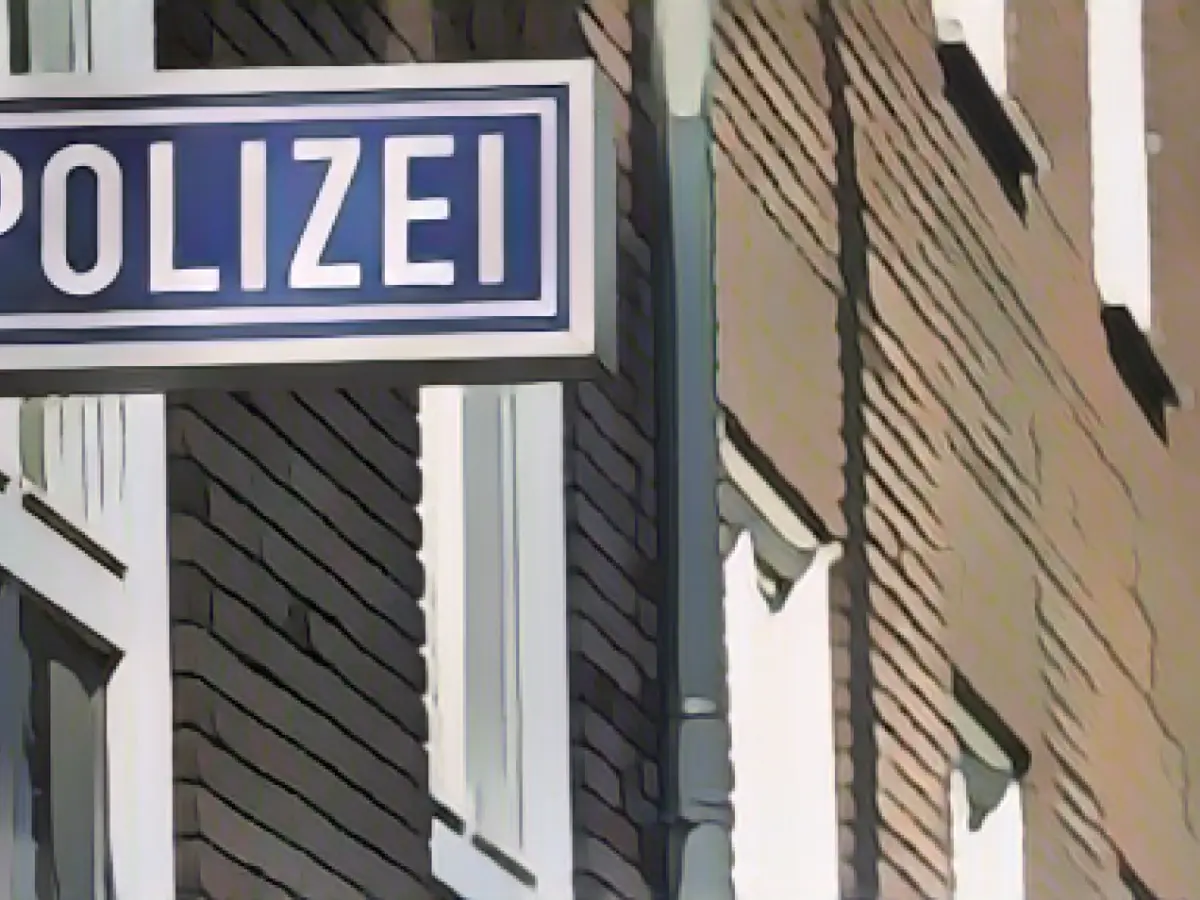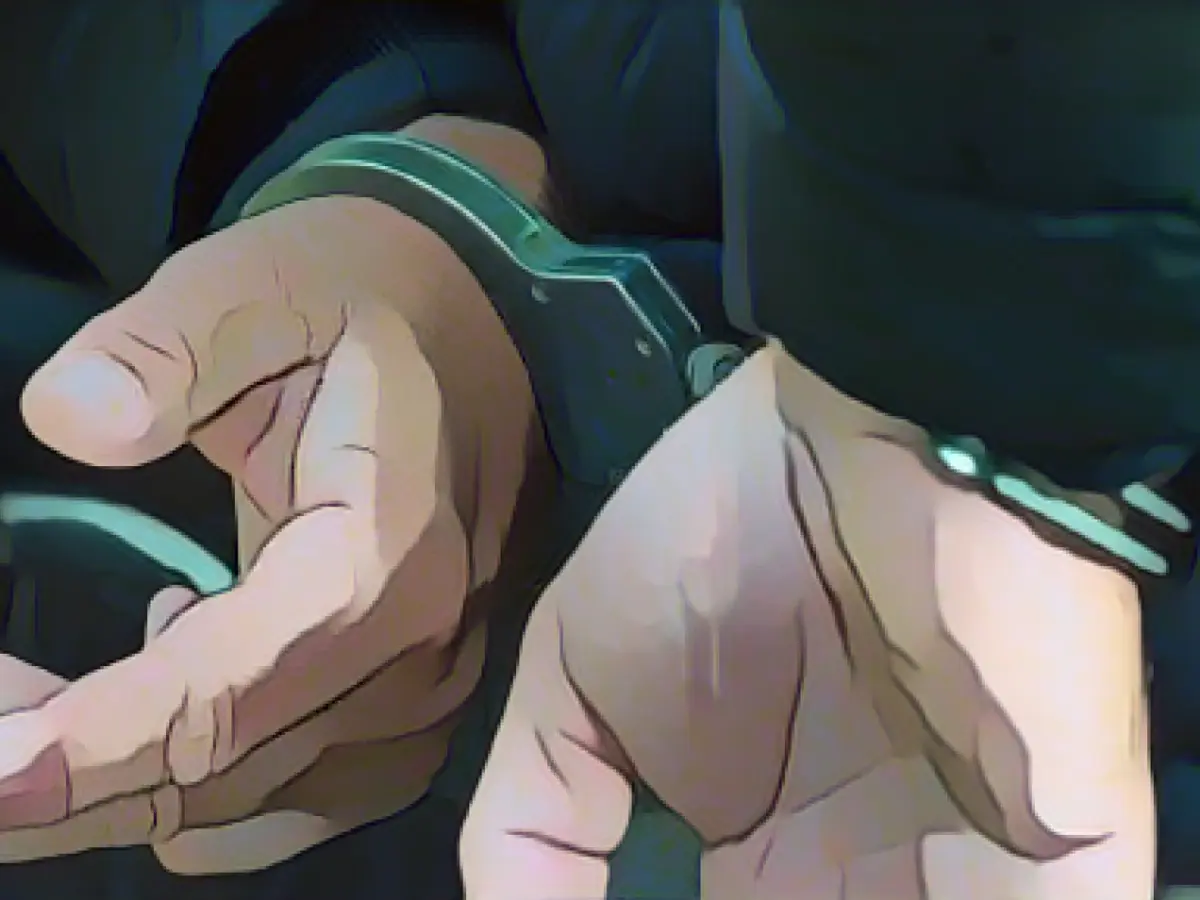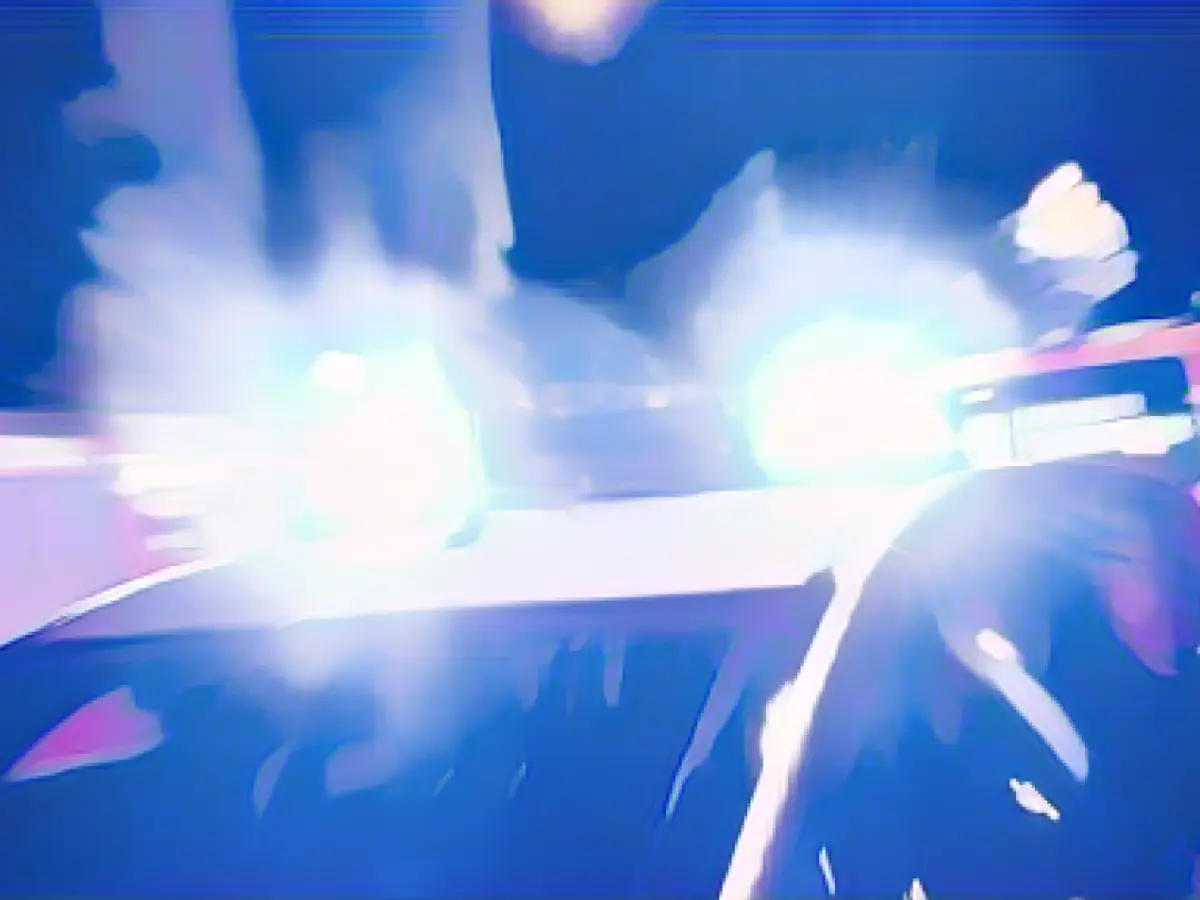Heads Up: DWD Issues Ice Alert for Baden-Württemberg Drivers
The German Weather Service (DWD) in Stuttgart has issued a warning to drivers in Baden-Württemberg, alerting them of icy road conditions on Friday morning. Specifically, the DWD anticipates a level 2 out of 4 risk of black ice, triggered by rain arriving from Saarland in the early morning hours.
According to a DWD representative, black ice forms when rain falls on frozen ground, turning the rainwater into a slippery layer on the road surface. The western half of the country could potentially be affected by this hazard, with northern Baden arguably bearing the brunt of the black ice risk.
Given the unpredictability of black ice formation, the DWD representative advises drivers to exercise caution during morning rush hour traffic on Friday. While it's difficult to pinpoint exact locations for black ice formation, drivers should stay attentive to the subtle cues of dark or shiny spots on the road, which may indicate black ice's presence.
As the bad weather moves southeastward across Baden-Württemberg and toward the Bavarian border during the day, the risk of black ice in the eastern part of the state will lessen due to rising temperatures. The rest of the weekend is anticipated to remain frosty, with temperatures expected to rise by the end of next week.
By the time Friday rolls around, The Danube's temperature is predicted to climb from zero degrees to a balmy seven degrees in Breisgau. Meanwhile, some parts of the country may even see snowfall with temperatures ranging from minus three to plus five degrees.
To navigate Baden-Württemberg's icy roads confidently, explore these tips carefully:
- Reduce Speed: Slow down significantly, especially on bridges and overpasses where black ice is more likely to form.
- Use Low Gear: If you're driving a manual transmission vehicle, opt for low gear when driving uphill to maintain control and avoid wheelspin.
- Avoid Sudden Movements: Make smooth, gradual turns and avoid rapid braking or acceleration to avoid your vehicle losing traction on icy surfaces.
- Increase Following Distance: Leave ample space between your vehicle and the one ahead to allow extra time to stop or react to changing road conditions.
- Use Headlights: Turn on your headlights to increase your visibility and help other drivers see you better, especially during low-light conditions.
- Stay Informed: Keep up to date on road conditions through local news, traffic updates or mobile apps that provide real-time information about icy patches.
- Identify Black Ice: Look for signs of black ice, such as dark or shiny spots on the road, and slow down if you suspect it might be present.
- Prepare for Emergencies: Keep an emergency kit in your car, equipped with items like a blanket, flashlight, first aid kit and snacks, in case you get stranded.
- Consider Alternative Routes: If possible, choose routes that are less prone to icing, such as main highways rather than rural roads.
- Maintain Your Vehicle: Ensure your vehicle is in good working condition, with proper tire pressure, functioning brakes, and adequate tread depth on your tires, to improve traction on icy surfaces.
By following these guidelines, you can significantly minimize the risks associated with driving on black ice-affected roads in Baden-Württemberg.








